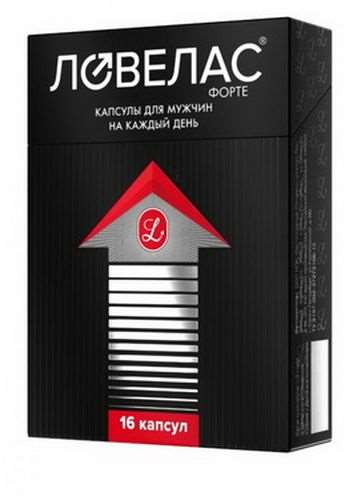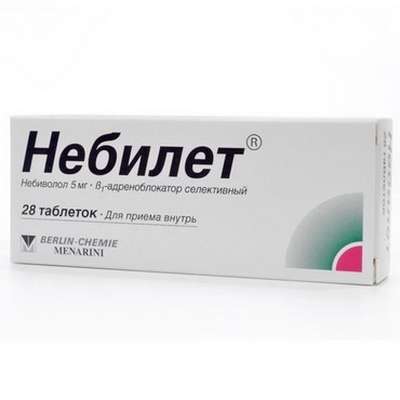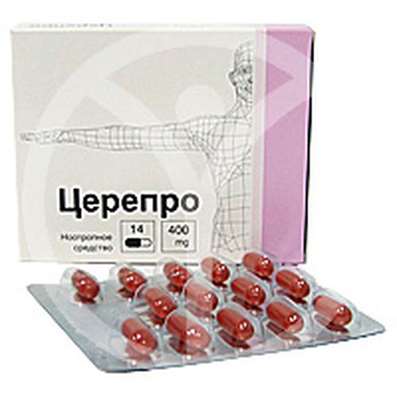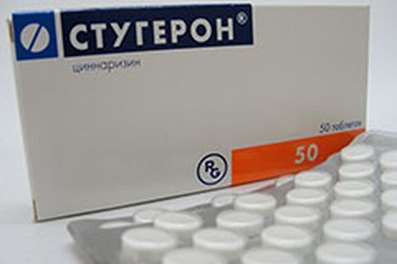Instruction for use: Cyclosporin HEXAL
I want this, give me price
Dosage form: Capsules; Oral solution
Active substance: Cyclosporinum
ATX
L04AD01 Ciclosporin
Pharmacological group:
Immunodepressants
The nosological classification (ICD-10)
H20 Iridocyclitis: Recurrent Irritis; Sympathetic iridocyclitis; Sluggish posterior uveitis; Sluggish posterior uveitis; Posterior uveitis; Iridocyclitis of posterior segment of eye; Iridocyclitis and other uveitis; Irit; Keratoididocyclitis; Sharp Irritus; Uveitis; Cyclitis; Acute Iridocyclitis; Acute non-infectious uveitis
L20 Atopic dermatitis: Allergic diseases of the skin; Allergic skin disease noninfectious etiology; Allergic skin disease etiology nemikrobnoy; Allergic skin diseases; Allergic skin lesions; Allergic reactions on the skin; atopic dermatitis; Allergic dermatosis; Allergic diathesis; Allergic itching dermatosis; Allergic skin disease; Allergic skin irritation; allergic Dermatitis; atopic Dermatitis; allergic dermatoses; exudative diathesis; Itchy atopic eczema Itchy allergic dermatosis; Allergic skin disease; Cutaneous allergic reaction to drugs and chemicals; Cutaneous reactions to medications; Skin and allergic disease; Acute eczema; common neurodermatitis; Chronic atopic dermatitis; Exudative diathesis
L40 Psoriasis: Chronic plaque psoriasis with diffuse; generalized psoriasis; Psoriasis of the scalp; hairy parts of the skin; A generalized form of psoriasis; Psoriazoformny dermatitis; Psoriasis complicated with erythroderma; disabling psoriasis; Isolated psoriatic plaque; Eksfolliativny psoriasis; psoriatic erythroderma; Psoriasis with eczematization; Hyperkeratosis in psoriasis; Inverse psoriasis; Psoriasis ekzemopodobnye; dermatoses psoriazoformny; Psoriasis genitals; Psoriasis lesions with hairy areas of the skin; erythrodermic psoriasis; Chronic psoriasis of the scalp; Chronic psoriasis; ordinary psoriasis; refractory psoriasis; Koebner phenomenon; psoriasis
M06.9 Rheumatoid arthritis, unspecified: Rheumatoid arthritis; Pain syndrome in rheumatic diseases; Pain in rheumatoid arthritis; Inflammation in rheumatoid arthritis; Degenerative forms of rheumatoid arthritis; Children's rheumatoid arthritis; Exacerbation of rheumatoid arthritis; Acute articular rheumatism; Rheumatic arthritis; Rheumatic polyarthritis; Rheumatoid arthritis; Rheumatic polyarthritis; Rheumatoid arthritis; Rheumatoid arthritis; Rheumatoid arthritis of active course; Rheumatoid periarthritis; Rheumatoid polyarthritis; Acute rheumatoid arthritis; Acute rheumatism
N04 Nephrotic Syndrome: Nephroz; Edema of the kidneys; Nephrotic syndrome; Lipoid nephrosis; Nephrotic syndrome without uremia; Acute nephrotic syndrome; Edematic syndrome of renal genesis; Renal form of diabetes insipidus; Segmental glomerulosclerosis; Segmental glomerulonephritis; Focal glomerulosclerosis; Focal glomerulonephritis; Family Nephrotic Syndromes; Chronic nephrotic proteinuric syndrome; Lipiduria; Jade hereditary; Nephrotic-proteinuric syndrome
T86 Dying and rejection of transplanted organs and tissues: Transplant disease vs. host; The rejection crisis in organ and tissue transplantation; The crisis of immunological incompatibility in organ transplantation; Incompatibility of tissues; Graft rejection; Graft rejection; Rejection reactions during organ transplantation; Rejection reactions during tissue transplantation; Graft versus host response; Rejection of transplant rejection; Graft-versus-host syndrome; Fabric incompatibility
T86.0 Bone marrow transplant rejection: Rejection during bone marrow transplantation
T86.1 Kidney transplant death and rejection: Reaction of acute rejection of a transplanted kidney; Refractory tissue rejection in patients after allogeneic kidney transplantation
T86.2 Dying and rejection of a heart transplant
T86.3 Dying and rejection of the cardiopulmonary graft: The rejection of the combined cardiopulmonary graft
T86.4 Dying and rejection of liver transplant
T86.8 Dying and rejection of other transplanted organs and tissues
Composition and release form
Solution for oral administration 1 ml
Cyclosporine 100 mg
Excipients: vitamin E; PEG 400; Ethanol is absolute
In bottles of dark glass of 50 ml, complete with a graduated graduated syringe; In a pack of cardboard 1 bottle.
Capsules - 1 caps.
Cyclosporin 25 mg; 50 mg; 100 mg
Auxiliary substances: gelatin; glycerol; Sorbitol; Vitamin E; PEG 400; Red iron oxide; Ethanol is absolute
In a planar cell pack of 5; In a pack of cardboard 10 or 20 packages.
Characteristic
A cyclic polypeptide consisting of 11 amino acids.
Pharmachologic effect
Mode of action - Immunosuppressive.
It has a selective effect on T-lymphocytes. Suppresses the development of cellular and humoral immunity responses that depend on T-lymphocytes, including immunity to allograft. Prevents the activation of lymphocytes by inhibiting the release of lymphokines. Does not suppress hemopoiesis and does not affect the functioning of phagocytic cells.
Pharmacokinetics
Absorbed in the intestines. Bioavailability - 30%, increases depending on the duration of Stably absorbed in the digestive tract and virtually independent of food intake, which provides a low variability of pharmacokinetics and a pronounced relationship between the effect of the drug and the dose taken.
After ingestion of Cmax, cyclosporine in the blood plasma is achieved through (1,3 ± 0,53) h (solution for oral administration) and (95 ± 42,1) min (caps.).
Cyclosporine is distributed mainly outside the bloodstream with an apparent volume of distribution of 3-5 l / kg. In plasma, from 33 to 47%, in granulocytes - from 5 to 12%, in lymphocytes - from 4 to 9% and in erythrocytes - from 41 to 58% of the injected drug. Binding to plasma proteins is about 90%.
In the process of biotransformation, up to 15 metabolites are formed. The main ways of metabolism are mono- and dihydroxylation in different parts of the molecule. The activity of none of the metabolites does not exceed the activity of the "mother" substance by more than 10%.
Elimination from the body occurs mainly with bile, only about 6% of the administered dose is excreted in the urine in the form of metabolites and about 0.1% - in the form of unchanged substance. T1 / 2 values have significant variations and are about 6.3 hours in healthy volunteers, about 20.4 hours in patients with severe liver disease and about 11 hours (from 2 to 25 hours) with kidney transplantation. The size of the clearance of cyclosporine in children is approximately 2 times higher than in adults.
Capsules and oral solution are bioequivalent.
Indication of the drug Cyclosporin HEXAL
Transplantology:
- suppression of immunity and prevention of rejection after kidney, liver, heart, combined cardiopulmonary graft, lung or pancreas transplantation;
- Prevention of graft rejection after bone marrow transplantation;
- prevention and treatment of graft-versus-host reactions.
Other diseases:
- endogenous uveitis (after exclusion of infectious etiology) - active, vision-threatening uveitis of the middle or posterior region of the eye; Uveitis of Behcet with recurrent attacks of inflammation affecting the retina;
- severe psoriasis, as a rule, in cases of resistance to previous treatment;
- nephrotic syndrome, dependent on glucocorticoids and resistant to them (renal dysfunction with pronounced loss of protein), caused by the pathology of the vascular glomerulus (such diseases as minimal nephropathy, focal and segmental glomerulonephritis);
- severe forms of active rheumatoid arthritis (in cases where classic slow-acting antirheumatic drugs are ineffective or their use is impossible);
- severe forms of atopic dermatitis, when systemic therapy is indicated.
Contraindications
Hypersensitivity to cyclosporine and other components of the drug; Pregnancy and the period of breastfeeding.
Application in pregnancy and breastfeeding
Taking the drug by pregnant women is possible only if the expected benefit justifies the potential risk to the fetus. During breastfeeding, you should cancel taking the medication, because Possible the penetration of cyclosporine into the mother's milk.
Side effects
Side effects of cyclosporine depend on the dose and are reduced with a decrease in the dose of the drug.
Kidneys: most often, especially in the first weeks of therapy - complications associated with increased levels of creatinine and urea in the blood serum. These phenomena are associated with a functional change in the kidneys, they depend on the dose and decrease when it decreases.
Hemopoietic system: possible development of anemia, rarely - of leukopenia. In isolated cases - thrombocytopenia and microangiopathic hemolytic anemia.
Skin: often - excessive skin hairs, rarely - rash, hair loss, allergic skin reactions, redness of the skin, itching.
Cardiovascular system: often - arterial hypertension, less often - ischemic heart disease.
Immune system: malignant and lymphoproliferative disorders are possible. In the treatment of psoriasis, benign lymphoproliferative disorders are possible, as well as B- and T-cell lymphomas, which can disappear when the drug is withdrawn.
Digestive system: often - anorexia, nausea, vomiting, abdominal pain, diarrhea, gingival hyperplasia, impaired liver function (accompanied by increased levels of bilirubin and "hepatic" enzymes in the blood serum); Rarely - pancreatitis.
Muscular system: rarely - muscle cramps, muscle pains, muscle weakness.
Nervous system and sensory organs: often - tremor, fatigue, paresthesia - mainly in the first weeks of therapy. Rarely - motor polyneuropathy, signs of encephalopathy (convulsions, inhibition, disorientation, delayed reactions, psychomotor agitation, sleep disturbance, visual disturbances, cortical blindness, coma, paresis, cerebellar ataxia).
Laboratory indicators, metabolism: often a reversible small increase in serum lipids, as well as weight gain, hyperglycemia, hyperuricemia, hyperkalemia, hypomagnesemia.
Interaction
Cyclosporine in combination with potassium-sparing diuretics can cause hyperkalemia or magnesium deficiency, so it is necessary to monitor the potassium and magnesium levels and avoid excess potassium intake into the body with food.
With the simultaneous use of Cyclosporine HEXAL with other immunosuppressive drugs, the risk of infections and lymphoproliferative diseases increases.
The risk of developing nephrotoxicity increases with simultaneous administration of Cyclosporine HEXAL and preparations such as aminoglycosides (gentamicin and tobramycin), amphotericin B, ciprofloxacin, melphalan, trimethoprim, vancomycin, NSAIDs (diclofenac, naproxen).
With simultaneous admission with nifedipine, gum damage (hyperplasia) can develop.
When transplanting organs in the case of simultaneous use with fibrates (eg bezafibrate, fenofibrate), there is sometimes a more pronounced and persistent impairment of renal function.
Orlistat inhibits the absorption of fats from food and thus can change the bioavailability of Cyclosporine HEXAL.
Preparations that increase the concentration of cyclosporine in the blood: ketoconazole, fluconazole, itraconazole, some macrolide antibiotics (eg erythromycin, clarithromycin, josamycin, posonomycin and pristinamycin), doxycycline, oral contraceptives, propafenone, methylprednisolone (in high doses), metoclopramide, danazol, amiodarone, Cholic acid and its derivatives, as well as calcium antagonists (eg diltiazem, nifedipine, verapamil, mibefradil).
Drugs that lower the concentration of cyclosporine in the blood: barbiturates, carbamazepine, phenytoin, metamizole, rifampicin, nafcillin, octreotide, probucol, troglitazone and sulfadimidine and trimethoprim with IV introduction, as well as preparations containing St. John's wort.
If it is impossible to avoid a combined use, a careful individual selection of doses of cyclosporine is necessary.
With simultaneous application of tacrolimus, it is possible to develop a nephrotoxic effect of cyclosporine, as well as an increase in the half-life of it.
Cyclosporine reduces clearance and increases the toxicity of digoxin, colchicine, lovastatin and prednisolone.
In connection with the immunosuppressive effect of cyclosporine, it is impossible to exclude the development of atypical potentially dangerous reactions during vaccination, so the use of live attenuated vaccines should be avoided.
Flavon substances found in grapefruit juice affect cytochrome P450, which may increase the level of cyclosporine in the blood. Therefore, it is not recommended to drink grapefruit juice in the interval 1 h before taking the drug.
Dosing and Administration
Inside, with food, always at the same time of day.
The solution is diluted with drinking water immediately before use (but not in a plastic cup). In order for the dose to be taken as completely as possible, you can add the liquid to the glass and drink again.
The drug should be taken with the attached measuring syringe with a calibration of 0.5 to 4 ml with an interval of 0.1 ml.
Capsules - not liquid, squeezed with water.
The daily dose of the drug should always be divided into 2 separate doses.
Do not take the drug with grapefruit juice.
Organ transplantation (in combination with other immunosuppressive agents): adults, the initial dose is 10-14 mg / kg per day in 2 divided doses at an interval of 12 hours. This dose is used for 1-2 weeks after the operation. Then, by monitoring the level of cyclosporine in the blood, gradually reduce the dose to 2-6 mg / kg per day in 2 divided doses.
The therapeutic range of the drug in the blood for subsequent use is 100 to 400 ng / ml.
In kidney transplantation, it is shown that the doses on the lower recommended limit, i.e. Below 3-4 mg / kg, and a blood concentration of about 100 ng / ml lead to the risk of development of rejection reactions.
Some patients after 1 month after transplantation while taking glucocorticoids, a dose below 5 mg / kg is recommended.
Bone marrow transplantation: a short-term combination of cyclosporine and methotrexate is usually recommended. The dose of the drug is selected individually. For 1-2 days before the operation, it is recommended to inject cyclosporine 2.5-5 mg / kg per day. As soon as oral administration of the drug becomes possible, go on taking capsules at a dose of 12.5 mg / kg per day in 2 divided doses for 3-6 months. Then the dose is gradually reduced until the end of the course of treatment.
Therapy of an acute graft-versus-host reaction: an initial dose of 12.5-15 mg / kg per day in 2 divided doses. After 50 days begin to reduce the dose every 5% for 1 week and cancel therapy after about 20 weeks.
If, after the withdrawal of cyclosporine, the acute reaction re-develops, the drug should be re-administered.
If transient complaints from the gastrointestinal tract are observed during administration of the drug for organ, bone marrow transplantation and acute graft-versus-host reactions, one-third of the recommended daily dose of the drug can be injected once / in the appropriate dosage forms.
Severe endogenous uveitis: an initial dose of 5-10 mg / kg per day in 2 divided doses until inflammation subsides and visual acuity is improved.
In acute cases, an additional 0.2-0.6 mg / kg / day of prednisolone or another similar glucocorticoid may be prescribed.
During maintenance therapy, the dose should be reduced slowly until the minimum effective dose is reached.
The therapeutic level of the concentration of cyclosporine in the blood is from 100 to 150 ng / ml.
There is no information on the prescription of the drug for these indications to young children. There are isolated data on the use of cyclosporine in children over the age of 5 years.
Heavy forms of psoriasis: to relieve regressive symptoms - 2.5 mg / kg in 2 divided doses. If after 1 month there is no improvement in skin condition, you can gradually increase the dose by 1 mg / kg, maximum to 5 mg / kg in 2 divided doses. The dose for repeated treatment should be minimally effective.
If using a dose of 5 mg / kg after 6 weeks, there is no significant improvement, you must cancel the drug.
Nephrotic syndrome: it is recommended to use doses of not more than 5 mg / kg in adults and not more than 6 mg / kg in children divided into 2 separate doses for normal renal function to relieve the regressive symptoms of nephrotic syndrome. For patients with impaired renal function (Cl creatinine serum above 200 μmol / l in adults and 140 μmol / L in children are contraindications), the initial dose of cyclosporine should not exceed 2.5 mg / kg.
The level of the therapeutically effective concentrations of cyclosporine in the blood is from 60 to 160 ng / ml. Check the concentration level first, if possible, every day, and then every 2 weeks.
In the first 3 months of treatment, the level of serum creatinine should be monitored regularly (with normal kidney function - every 2 weeks, with disrupted - every week). With a stable level of creatinine, this value can be monitored with an interval of 2 months.
If the patient has severe liver function disorders, the initial dose of cyclosporine should be reduced by 25-50%.
For patients with a glucocorticoid-resistant nephrotic syndrome, if the effectiveness of a single cyclosporine is inadequate, a combination of cyclosporine with low doses of glucocorticoids is recommended.
Severe rheumatoid arthritis: the first 6 weeks of therapy - 2.5 mg / kg in 2 divided doses. In the event that the drug is poorly tolerated, you can reduce the dose. Further the dose is established individually, depending on the course of the disease and the tolerance, and should be minimally effective. Do not exceed the daily dose of 4 mg / kg. In emergency cases, an increase in the dose of cyclosporine to 5 mg / kg is possible.
Cyclosporine can be given in combination with low doses of glucocorticoids and / or with NSAIDs.
Heavy forms of atopic dermatitis: to remove the acute picture of the disease - 2.5 mg / kg in 2 divided doses. If after 2 weeks there is no significant improvement, it is necessary to increase the dose of cyclosporine to a maximum of 5 mg / kg.
In the single most severe cases, an initial dose of 5 mg / kg of cyclosporine is required. With the onset of improvement, a gradual reduction in the dose of the drug is necessary. If no significant improvement is observed after 6 weeks of treatment with cyclosporine, or if the effective doses do not correspond to those recommended above, it is necessary to cancel the therapy with the drug.
Children: experience of cyclosporine in children under 1 year is negligible. Children over the age of 1 year are prescribed cyclosporine in usual doses. There is experience in using higher doses of Cyclosporine HEXAL in children than in adults. It was shown that the clearance of cyclosporine in children is higher, therefore, to achieve similar concentrations in the blood, higher doses are needed.
Dosage for elderly patients: there is insufficient data on the use of cyclosporine in elderly patients. In this case, it is necessary to take into account the age factors, primarily the impaired renal function, and to make appropriate dose adjustments.
Dosage for patients with impaired renal function: there is a large amount of data on the use of cyclosporine in this category of patients for organ transplantation. However, given the increase in serum creatinine or the drop in creatinine clearance, especially after kidney transplantation, and the possibility of developing rejection reactions, the dose is selected taking into account risk factors and benefits with complete control of the disease pattern and mandatory determination of the level of cyclosporine in the blood.
Dosage for patients with impaired liver function: in patients with impaired liver function, a significant change in the pharmacokinetics of cyclosporine is possible. In this case, the level of cyclosporin concentration in the blood should be constantly monitored and, if necessary, dose adjustments should be made.
Duration of application: organ transplantation - with the exception of prevention of acute graft-versus-host therapy, duration of application is not provided; Severe endogenous uveitis - from 3 to 16 months; Severe forms of psoriasis - usually 12 weeks; Nephrotic syndrome - if, after 3 months of cyclosporine treatment, the symptomatology of the nephrotic syndrome remains, discontinue therapy with the drug; Severe rheumatoid arthritis - there is experience in the clinical use of cyclosporine for 12 months; If after 3 months of therapy there is no effectiveness of the drug, it should be canceled; Severe, resistant to therapy forms of atopic dermatitis - usually 6-8 weeks.
Overdose
Information about drug overdose is limited.
Symptoms: impaired consciousness, headache, tachycardia and in some cases - reversible renal failure.
Treatment: symptomatic therapy. Cyclosporine is not excreted from the body during hemodialysis and hemoperfusion using activated carbon. Such nonspecific methods of excretion as gastric lavage are shown.
Precautionary measures
With caution appoint elderly patients. It is necessary to systematically monitor kidney and liver function, potassium level, magnesium in serum, blood pressure.
Special instructions
Cyclosporine HEXAL can be used by physicians with experience in conducting immunosuppressive therapy and treating patients after organ transplantation. Use of the drug is possible only in specialized medical institutions.
During the treatment, constant monitoring of laboratory parameters, blood pressure, liver and kidney status, as well as determination of serum lipids (before and after the first month of treatment) is necessary. With an increase in blood pressure, antihypertensive therapy is recommended.
Cyclosporine can cause hyperkalemia or magnesium deficiency, therefore, first of all, with severe renal dysfunction, it is necessary to monitor the level of potassium and magnesium in the blood plasma, avoid excess intake of potassium in the body (with food, potassium-containing drugs).
When cyclosporine is used simultaneously with other immunosuppressive drugs, there is a risk of excessive immunosuppression, which can lead to the development of infections and the formation of lymphomas (mainly Hodgkin's lymphoma and reticular sarcoma). When taking the drug, a regular examination of the skin and histological monitoring of suspicious areas is necessary.
Since cyclosporine can affect kidney function, at least 2 measurements of the baseline serum creatinine level should be performed on the background of treatment. The measurements are repeated weekly for 1 month, and then for 3 months - with a 2-week interval. Then, with a stable level of creatinine, the measurements are carried out monthly. More frequent control of the level of creatinine is necessary if it is necessary to increase the dose of cyclosporine or with the simultaneous use of NSAIDs. In the event that the level of creatinine increased by more than 30% of the initial value (within normal limits), the dose of cyclosporine should be reduced by 25-50%. If the level of serum creatinine increased by more than 50%, it is necessary to reduce the dose of cyclosporine by at least 50%.
With endogenous uveitis therapy should be carried out with constant ophthalmic control, as well as when determining the level of concentration of cyclosporine in the blood.
In nephrotic syndrome, it is necessary to determine the baseline values and to conduct regular monitoring of serum creatinine level. The dose of the drug is corrected in this case taking into account the dynamics of values of the creatinine concentration in the blood plasma. During the treatment, systematic monitoring of the level of creatinine is carried out at intervals of 2 weeks in the first 3 months of therapy and in the future - 1 time in 1-2 months. In the case of long (more than 1 year) administration of cyclosporine, a kidney biopsy is recommended. Patients should not receive cyclosporine with an uncontrolled increase in blood pressure. Possible deterioration of renal function in elderly patients.
In patients with psoriasis, skin lesions that are not typical of psoriasis should be subjected to biopsy prior to treatment. Patients with cancer or precancerous skin changes should receive treatment with the drug only after appropriate treatment for such changes in the absence of alternative forms of effective therapy. Avoid prolonged exposure to sunlight.
Patients on the therapy with Cyclosporine HEXAL should not receive either UV radiation or PUVA therapy at the same time.
Before the start of treatment, and also in the first 3 months of therapy, it is necessary to control the level of uric acid in the blood and urine.
It is allowed to increase the values of "hepatic" enzymes and bilirubin in blood as much as 2 times.
In the treatment of rheumatoid arthritis, for safety and efficacy of therapy, it is necessary to carry out control measurements of the following indicators: regular monitoring of the level of creatinine in the blood; Hematological profile (number of erythrocytes, leukocytes, platelets) - before treatment and every 4 weeks; Hepatic parameters - before treatment and every 4 weeks; Urinalysis - before treatment and every 4 weeks; Measurement of blood pressure before treatment and every 2 weeks for 3 months, then every 4 weeks; The level of potassium, lipids in the blood - before the treatment and every 4 weeks.
The drug contains 25.5% by volume of alcohol. When the recommended dosage is met, with each intake of cyclosporine, up to 1.2 grams of alcohol are ingested into the body. At the same time, there is a risk for the state of health in diseases of the liver, alcoholism, epilepsy, brain damage, pregnancy and for young children. The effect of other drugs can be weakened or strengthened.
Storage conditions of the drug Cyclosporin HEXAL
At a temperature of 20-30 ° C.
Keep out of the reach of children.
Shelf life of the drug Cyclosporin HEXAL
Solution for oral administration 100 mg / ml - 3 years. Open vial - 2 months.
Capsules 25 mg - 3 years.
Capsules 50 mg - 3 years.
Capsules 100 mg - 3 years.
Do not use after the expiry date printed on the package.

 Cart
Cart





